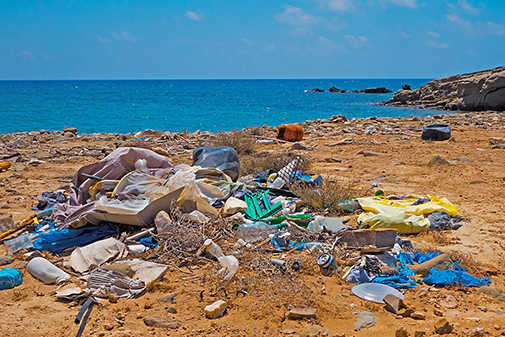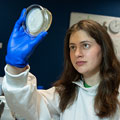Expert reaction: Microplastics discovered in human faeces
Posted on 22 October 2018

The study is being presented at United European Gastroenterology (UEG) Week in Vienna.
Professor Alistair Boxall, from the Department of Environment and Geography at the University of York, said: “I had seen this presented as a poster at the EmCon2018 meeting in Oslo earlier this year. It is a very interesting study and highlights that humans are being exposed to microplastics in our day to day lives.
Realistic exposures
“However, I'm not at all surprised or particularly worried by these findings. Microplastics have been found in tap water, bottled water, fish and mussel tissue and even in beer. We will also be exposed to particles from house dust, food packaging materials and the use of plastic bottles. It's therefore inevitable that at least some of these things will get into our lungs and digestive systems.
“There are some data from laboratory studies on uptake and effects on non-human animals but quite often these studies are done at very high concentrations it is therefore really hard to conclude whether there is a risk to human health or not. I think much more needs to be done with realistic exposures - this was one of the recommendations from our paper that came out last week on environmental risks of microplastics.
Evidence
“This is very much a preliminary study. From my reading of the abstract, I don't think we should jump to the conclusion that this is down to true environmental exposure (i.e. from what gets into soil, river waters and marine waters). We don’t have exact evidence from where this is coming from – it could be that most of these materials may be coming from house dust and the use of plastic containers and packaging or, for example, nylon fibres from our tumble dryer – and this could potentially outweigh the environmental routes of exposure.
“To truly understand the sources of exposure we need much more thorough studies where we monitor closely people’s day-to-day activities and the media they are exposed to (food, water, air). Only then will we be able to be confident on where these materials originate and, if they are found to be of concern to health, where to focus interventions.”
Explore more news

Breakthrough in blood test for Alzheimer’s by University of York researchers
Thursday 9 October 2025

Pharmacists could save the NHS billions of pounds with medicines checks, according to analysis by University of York
Monday 6 October 2025

University of York spin-out company receives funding boost
Monday 6 October 2025

Societal inequality linked to structural brain changes in children
Tuesday 30 September 2025

Cancer study to address ‘neglect’ of Gypsy, Traveller and Roma community
Tuesday 30 September 2025
